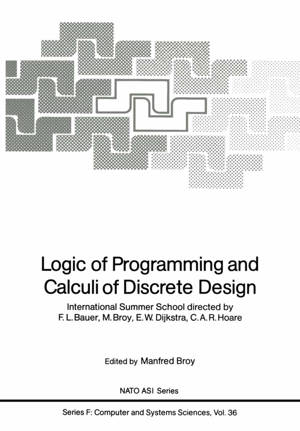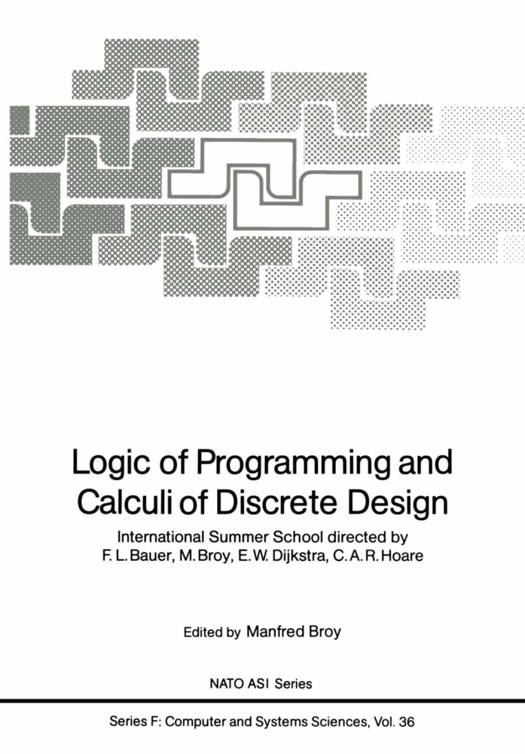
Je cadeautjes zeker op tijd in huis hebben voor de feestdagen? Kom langs in onze winkels en vind het perfecte geschenk!
- Afhalen na 1 uur in een winkel met voorraad
- Gratis thuislevering in België vanaf € 30
- Ruim aanbod met 7 miljoen producten
Je cadeautjes zeker op tijd in huis hebben voor de feestdagen? Kom langs in onze winkels en vind het perfecte geschenk!
- Afhalen na 1 uur in een winkel met voorraad
- Gratis thuislevering in België vanaf € 30
- Ruim aanbod met 7 miljoen producten
Zoeken
Logic of Programming and Calculi of Discrete Design
International Summer School Directed by F.L. Bauer, M. Broy, E.W. Dijkstra, C.A.R. Hoare
€ 83,95
+ 167 punten
Omschrijving
In computing science design plays an eminently important role. By now, it is quite clear that the issue of proper design of programs within a formal calculus is one of the most interesting and most difficult parts of computing science. Many demanding problems have to be envisaged here such as notations, rules and calculi, and the study of semantic models. We are 'far away from comprehensive and widely accepted solutions in these areas. Discussions at the summer school have clearly shown that people have quite different perspectives and priorities with respect to these three main areas. There is a general agreement that notation is very important. Here, notation is not so much used in the sense of "syntactic sugar", but rather in the sense of abstract syntax, in the sense of language constructs. Proper notation can significantly improve our understanding of the nature of the objects that we are dealing with and simplify the formal manipulation of these objects. However, influenced by educational background, habits, and schools of thought there are quite different tastes with respect to notation. The papers in these proceedings show very clearly how different those notations can be even when talking about quite similar objects.
Specificaties
Betrokkenen
- Regisseur(s):
- F Bauer, M - Broy, E W Dijkstra, C a R Hoare
- Uitgeverij:
Inhoud
- Aantal bladzijden:
- 415
- Taal:
- Engels
- Reeks:
- Reeksnummer:
- nr. 36
Eigenschappen
- Productcode (EAN):
- 9783642873768
- Verschijningsdatum:
- 9/04/2012
- Uitvoering:
- Paperback
- Formaat:
- Trade paperback (VS)
- Afmetingen:
- 170 mm x 244 mm
- Gewicht:
- 675 g

Alleen bij Standaard Boekhandel
+ 167 punten op je klantenkaart van Standaard Boekhandel
Beoordelingen
We publiceren alleen reviews die voldoen aan de voorwaarden voor reviews. Bekijk onze voorwaarden voor reviews.








